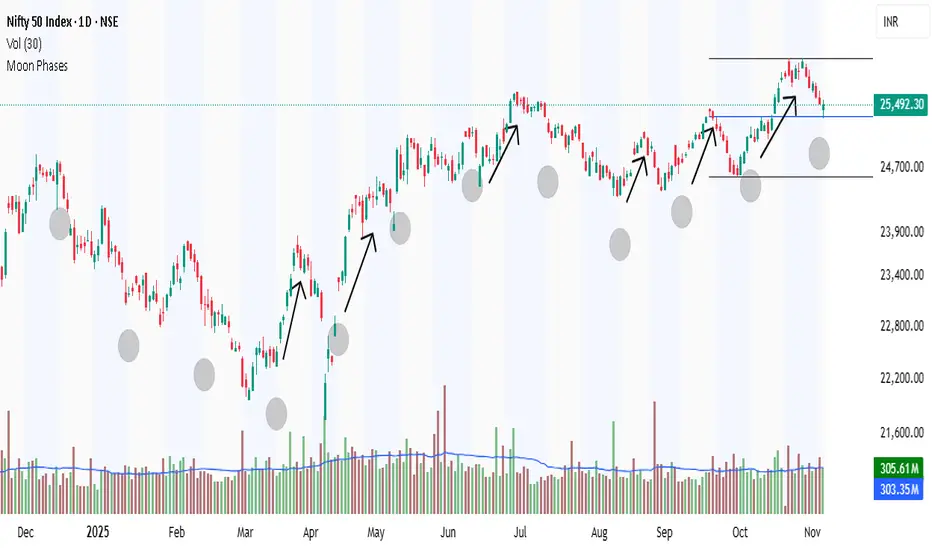The Moon's phases are the changing shapes of the Moon's illuminated portion as seen from Earth, caused by its orbit around our planet. The Sun always lights half of the Moon, but our view of that lit half varies over a cycle lasting about 29.5 days (a synodic month). There are eight primary phases, divided into four major ones (new moon, first quarter, full moon, last quarter) and four intermediate ones (waxing/waning crescent and gibbous).
On October 24, 2025, the Moon is in the waxing crescent phase, about 9% illuminated and roughly 3 days old since the previous new moon (which occurred around October 21). Look for it low in the western sky just after sunset. The next full moon is November 5 (Beaver Moon).
The idea that moon phases influence the stock market—often called the "lunar effect"—stems from behavioral finance, where subtle environmental cues like celestial cycles might subtly sway investor mood, optimism, and risk-taking. While mainstream economics dismisses it as pseudoscience or coincidence, several academic studies have uncovered statistically significant correlations between lunar cycles and market performance. These patterns suggest higher returns around new moons (waxing phase, symbolizing renewal and low energy) and lower returns or increased volatility around full moons (waning phase, linked to heightened emotions).
In short, moon phases aren't a crystal ball but offer a quirky lens on human irrationality in markets. If you're intrigued, overlay them on charts (e.g., via tools like TradingView) alongside fundamentals—but treat it as a tiebreaker, not gospel. For October 24, 2025 (waxing crescent, ~9% illuminated), studies suggest mild optimism; watch for full moon volatility on November 5
On October 24, 2025, the Moon is in the waxing crescent phase, about 9% illuminated and roughly 3 days old since the previous new moon (which occurred around October 21). Look for it low in the western sky just after sunset. The next full moon is November 5 (Beaver Moon).
The idea that moon phases influence the stock market—often called the "lunar effect"—stems from behavioral finance, where subtle environmental cues like celestial cycles might subtly sway investor mood, optimism, and risk-taking. While mainstream economics dismisses it as pseudoscience or coincidence, several academic studies have uncovered statistically significant correlations between lunar cycles and market performance. These patterns suggest higher returns around new moons (waxing phase, symbolizing renewal and low energy) and lower returns or increased volatility around full moons (waning phase, linked to heightened emotions).
In short, moon phases aren't a crystal ball but offer a quirky lens on human irrationality in markets. If you're intrigued, overlay them on charts (e.g., via tools like TradingView) alongside fundamentals—but treat it as a tiebreaker, not gospel. For October 24, 2025 (waxing crescent, ~9% illuminated), studies suggest mild optimism; watch for full moon volatility on November 5
Disclaimer
The information and publications are not meant to be, and do not constitute, financial, investment, trading, or other types of advice or recommendations supplied or endorsed by TradingView. Read more in the Terms of Use.
Disclaimer
The information and publications are not meant to be, and do not constitute, financial, investment, trading, or other types of advice or recommendations supplied or endorsed by TradingView. Read more in the Terms of Use.
